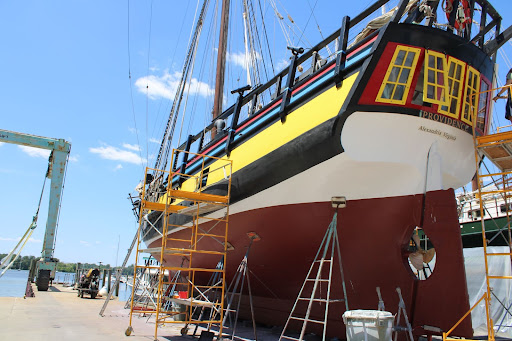
30 May Painting Providence
This week’s #TallShipTuesday addresses the history of how and why many 18th and 19th century ships were painted. They were mainly painted for identification, weather proofing and to identify the purpose of the vessel, e.g. merchant, privateer, naval. While it is hard to say exactly why Providence was painted her iconic colors, there is still a lot that her paint can tell us about her history. One of the foremost scholars of Providence, Hope S. Rider, speculates that “there is reason to suppose that in her early days, her sides were painted black,” before she had become a naval vessel during the Revolutionary War.
Because the original Providence was built in Rhode Island, her paint, regardless of the color, likely had a specific formula. At the time, these paints came from one of 30 paint shops in the Colony. According to Robert Foley, director of preservation at the Newport Restoration Foundation, ship paints were often made of linseed oil as the vehicle, pigments as the colorants and turpentine as a dryer. These products were purchased separately and mixed on the job on a daily basis. Why? Because the resealable can was not invented until the CIvil War, and therefore any excess paint would be wasted.
Today we use a similar formula on Providence for our exposed wood, which includes linseed oil, turpentine and pine tar – no pigments – to protect the wood in a traditional manner from the elements. Since the hulls of ships were primarily made of wood in the 18th century, it was important that they were protected as much as possible from the water, and the paints were one of the protective measures used to keep the ship seaworthy.




Sorry, the comment form is closed at this time.